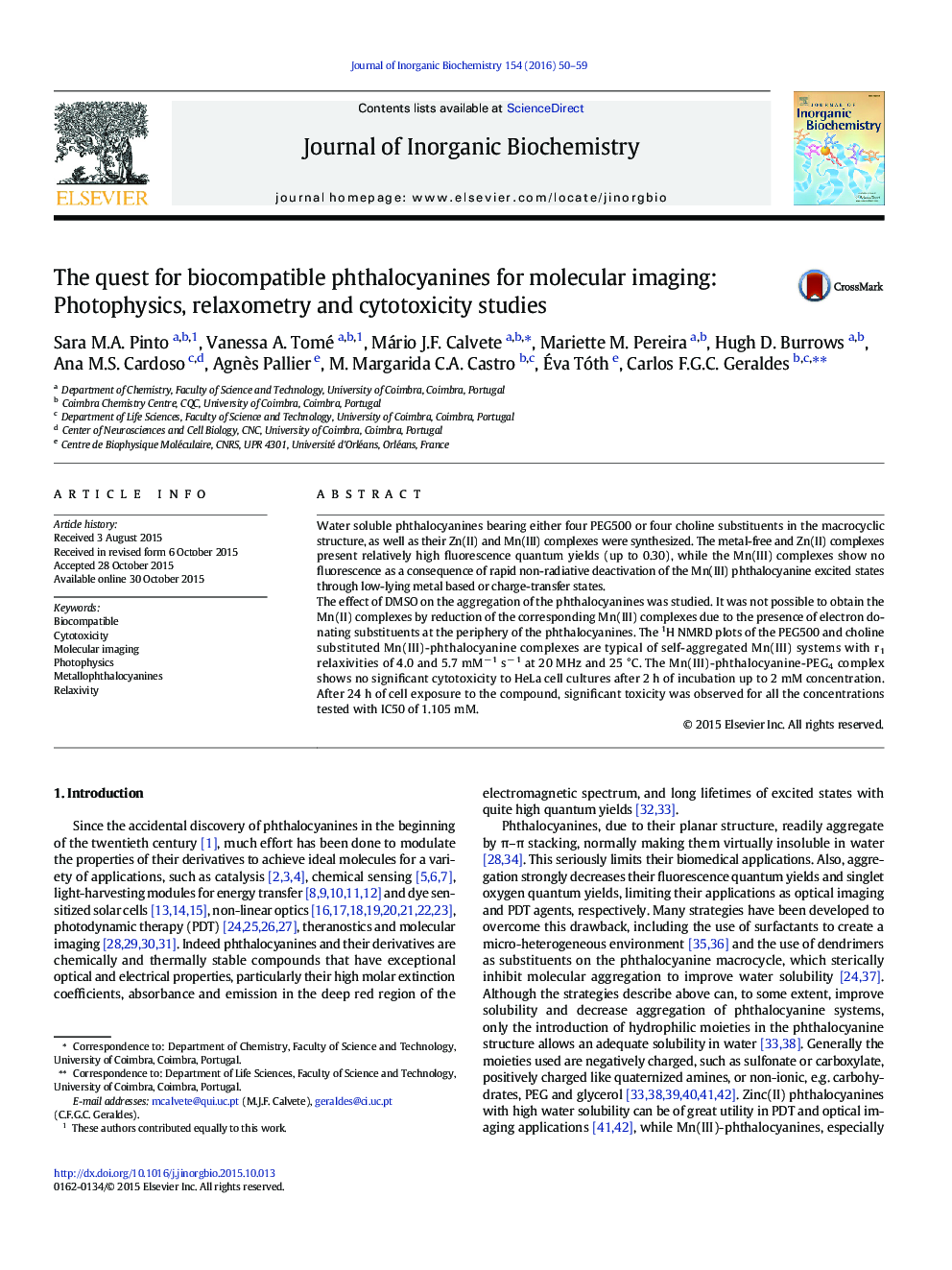| کد مقاله | کد نشریه | سال انتشار | مقاله انگلیسی | نسخه تمام متن |
|---|---|---|---|---|
| 1316489 | 1499433 | 2016 | 10 صفحه PDF | دانلود رایگان |
• Biocompatible metal free, zinc(II) and manganese(III) phthalocyanines were synthesized.
• Photophysical and relaxometric studies were done on the Zn(II) and Mn(III) phthalocyanines.
• Cytotoxicity studies were performed for one Mn(III) phthalocyanine with HeLa cells.
Water soluble phthalocyanines bearing either four PEG500 or four choline substituents in the macrocyclic structure, as well as their Zn(II) and Mn(III) complexes were synthesized. The metal-free and Zn(II) complexes present relatively high fluorescence quantum yields (up to 0.30), while the Mn(III) complexes show no fluorescence as a consequence of rapid non-radiative deactivation of the Mn(III) phthalocyanine excited states through low-lying metal based or charge-transfer states.The effect of DMSO on the aggregation of the phthalocyanines was studied. It was not possible to obtain the Mn(II) complexes by reduction of the corresponding Mn(III) complexes due to the presence of electron donating substituents at the periphery of the phthalocyanines. The 1H NMRD plots of the PEG500 and choline substituted Mn(III)-phthalocyanine complexes are typical of self-aggregated Mn(III) systems with r1 relaxivities of 4.0 and 5.7 mM− 1 s− 1 at 20 MHz and 25 °C. The Mn(III)-phthalocyanine-PEG4 complex shows no significant cytotoxicity to HeLa cell cultures after 2 h of incubation up to 2 mM concentration. After 24 h of cell exposure to the compound, significant toxicity was observed for all the concentrations tested with IC50 of 1.105 mM.
Water soluble phthalocyanines bearing either PEG500 or choline substituents were synthesized. Their Zn(II) complexes show quantum yields of 0.13–0.3, while the Mn(III) complexes present r1 relaxivities of 4.0–5.7 mM− 1 s− 1, with no significant toxicity to HeLa cell cultures.Figure optionsDownload as PowerPoint slide
Journal: Journal of Inorganic Biochemistry - Volume 154, January 2016, Pages 50–59
